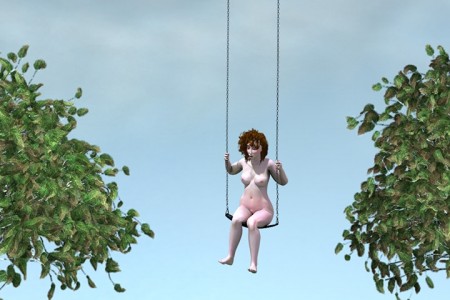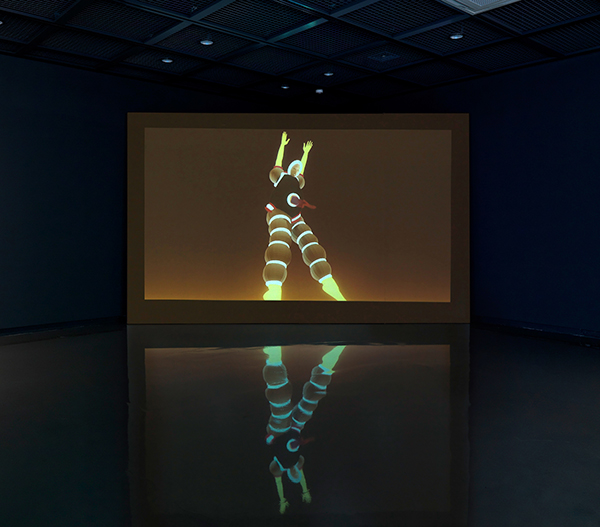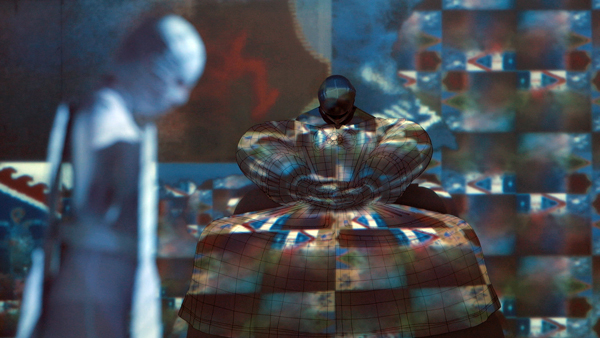This week I am delighted to welcome graduate student Veronica Sines to write on our final show of the fall 2015 season featuring Claudia Hart! Sines reflects on the complex virtual worlds that Hart has constructed throughout her career.

Since the late 1980s, Claudia Hart has used computer generated images (CGI) and 3D simulation technology to construct and alter virtual worlds. In the last two decades, she’s consistently used the technology to produce artworks that counter this male-dominated arena. Where Rockstar Games produces worlds of adrenaline-fueled rampage, Hart creates set-pieces of reverie and reflection—meditating on time and sensuality by way of the female body.
Hart’s use of these technologies attempts to alter the grand system in which they function. Her response to first-person shooter games includes reintroducing empathy for the avatar. This strategy can be seen in a 2012 piece titled On Synchronics: Song of the Avatars, produced in collaboration with twenty-four students from the School of the Art Institute of Chicago. Using the exquisite corpse method, Hart disseminated animation files to her students utilizing “rag doll” physics (a technology also used by the gaming industry)—a method of manipulating character movement so that it realistically responds to other forces and materials in its virtual surroundings. Her instruction was to have the imagined character attempt to break free from its virtual confines and come into being in the material world.

Hart has recently made this break herself, shifting from choreographing avatars to choreographing humans. In 2013, she produced The Alices (2013) an opera based on the tea party scene from Alice in Wonderland using augmented reality apps. Last year, she produced the expansive media ballet, The Dolls (2015), which Conversations at the Edge will show in an all-new staging this Thursday.
In this new version, a single dancer wears a flat paper gown, reminiscent of a baroque paper doll. Projections of syncopating algorithmic grids are projected on the dancer and the screen behind her, alternating between TV static and ambiguous iconography from across the centuries. The movement of the dancer, Kristina Isabelle, is at once elegant and mechanical—a relationship mirrored by the animated background behind her. A shadow moving across images of historical ruins suggests the passing of time—time rendered lost in the hypnotic flashing of Hart’s projected framework. This sense is heightened by Kurt Hentschlaeger’s eerie and experimental musical score.

In shifting from the virtual to the material, Hart’s work has become increasingly flexible, collaborative, and generative. It speaks to a system of living that involves ideals of inclusion, experience, and beauty—values apparent throughout her oeuvre. But this working method has also introduced a new structure of significance to her practice—that of interpersonal relationships. The multiple, yet often imperceptible, ways in which technology affects us are at the core of Hart’s interventions. Her work brings these processes to light. In this way, Hart’s body of work mediates reality. Whether through augmentation or distillation, she presents an interplay of life and technology that resonates with our everyday experiences.

Veronica Sines is a graduate student in Art History, Theory and Criticism and a curatorial fellow for the 2015-16 MFA Show at the School of the Art Institute of Chicago. Her thesis research revolves around Lee Lozano, one of the few female conceptual artists working in New York in the 1960s and 70s.